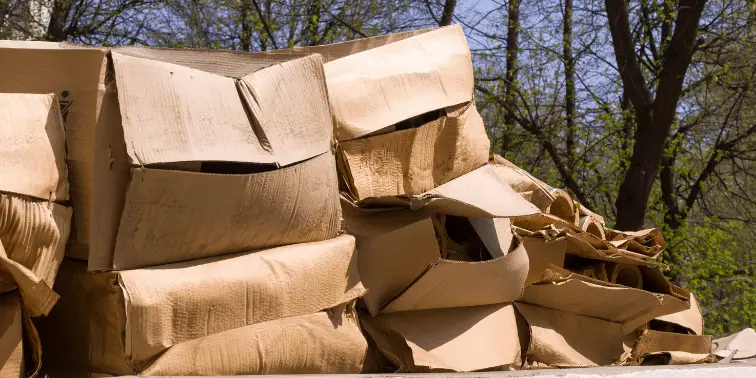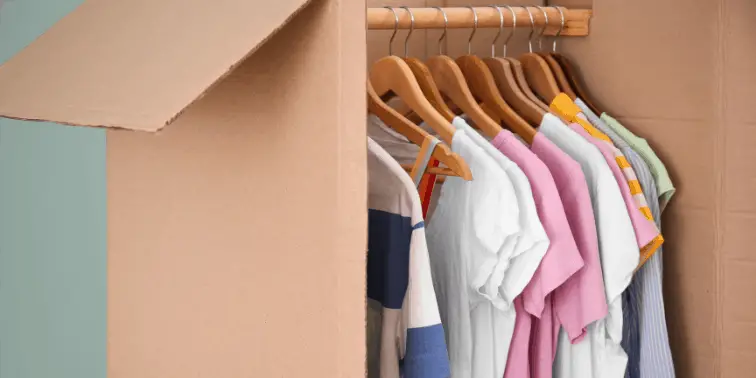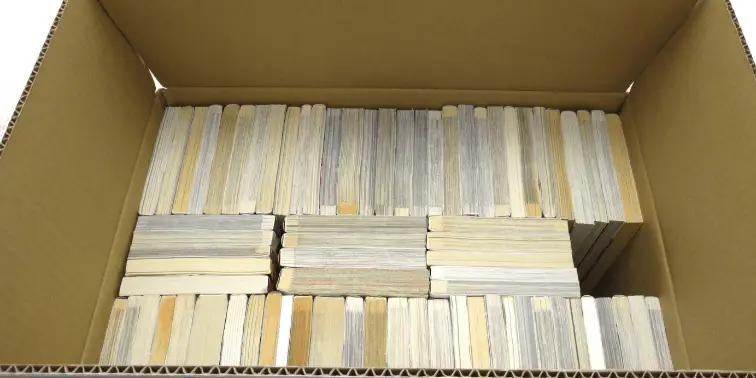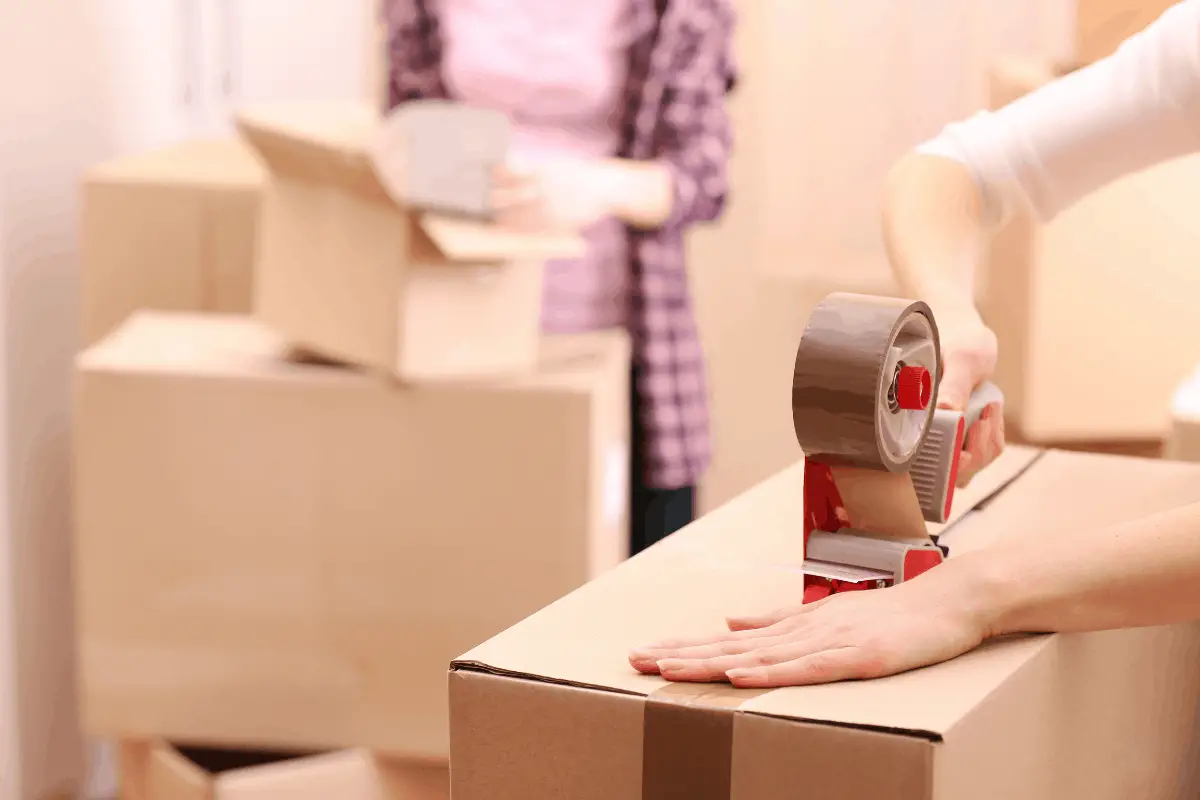Anyone with moving experience will tell you that finding the right boxes and packing them with care is critical to successfully transferring your belongings from one location to another—without breaking or losing anything along the way. So knowing how to pack boxes for moving each item or set of similar items is not something to overlook during your moving process.
There are some different preparatory steps to take and considerations to ponder before packing your stuff and hitting the road. We’ll go over those we recommend based on our own experiences packing boxes for moving and opening them at our destination.
Our first words of wisdom are, “Imagine opening a moving box in which several items are broken.”
You don’t want that, and neither do we! So, as you pack, imagine yourself removing each item from its box and wrapping to find it intact and looking as familiar as ever.
Table of Contents
Moving Box Selection
Here’s something many people don’t think much about before a move: choosing the best moving boxes. They’ll take anything they can get, as long as it’s cheap or free. They might even try to patch torn cardboard with tape or decide that putting the contents in plastic bags will protect them.
Nope!
You invested in your belongings once. Are you prepared to replace them now?
Used or New?

Some folks go scavenging around shopping centers, supermarkets, and liquor stores for shipping boxes. Yes, doing this can save you money. However, you need to check the boxes thoroughly before taking them home. Consider these things:
- Are they in good condition—no bent sides or sagging bottoms, and definitely no holes?
- What did they carry? If it was wet or sticky produce, forget it! Even if the box holds up. It might get what’s inside dirty.
- But if they’re in good shape, you’ll not only be saving yourself lots of money but also helping the environment by using them.
Perhaps, a good middle ground would be using second-hand boxes only for things that are not easily destroyed.
Moving Box Shapes and Sizes
Then, there is the matter of box shape and size. This, too, makes quite a difference in the success of your move. Standard moving boxes generally are rectangular cuboid (i.e., a three-dimensional rectangle) and come in various sizes:
- Small moving boxes and banker’s boxes (typically around 12″ x 12″ x 16 or 18 or 1.5-2 cubic feet). These are for small but heavy items like books, shop tools, canned food, etc. Banker’s boxes have removable lids and can be repurposed for file storage.
- Medium moving boxes (typically around 18″ x 18″ x 16″ or 3 cubic feet). These commonly used boxes are used for clothing, cooking pots, toys, small electrical or electronic gaming devices, etc.
- Large moving boxes (typically around 18″ x 18″ x 24″ or 4.5 cubic feet). These are for Bulky yet lightweight items like pillows, sheets and bed covers, winter coats, curtains and drapery, etc.
There are also specialty boxes for items too delicate or hard to fit into standard moving boxes. These include:

- Boxes for mirrors and framed pictures are generally two-piece moving boxes meant to accommodate different shapes and sizes of mirrors or framed artwork.
- Wardrobes hold clothing on hangers that you can fold in the middle.
- Although used less frequently than large plastic bags, mattress boxes can protect mattresses from tears and punctures during the moving process.
- Cardboard dividers segment boxes made for glassware to keep individual pieces from bumping against each other. They also serve as extra layers of protection from bumps or drops.
- Hard-sided crates are the best way to protect valuable artwork, antiques, and other valuable items during transit—whether in a moving truck or being shipped.
- Plastic bins are often used to transport leather clothing and footwear, delicate fabrics, and other possessions that need extra protection from the elements.
Finding or Buying New Moving Boxes
You can purchase unused moving boxes from home and office supply stores, moving or truck rental companies, and stores specializing in packing (e.g., The Container Store).
Packing the Boxes
Box selection is the first step and packing them with care is the essential second step. So don’t rush or skimp on this one!
Check a Box’s Weight Capacity Before Filling
Most moving and shipping boxes have the weight capacity printed on the box. We recommend a trial packing on top of a scale—at least until you get used to the approximate weight appropriate for a given box size. Leave a bit of extra weight allowance to accommodate the wrapping and cushioning materials.
Label the Boxes
You will save yourself extra work when loading time comes if you label each box as you pack it. That way, you will remember what’s inside. Once you move to the next box or two, we assure you, you will have forgotten the first. So then, you would need to unpack some of its contents to refresh your memory.
What should the label include?
- Color-coded or iconic (like different animals) for each room in the new home. This will make it fun for any kids involved too.
- Use “Fragile” labels or a heavy red marker on every side of a box with breakable content.
- If you really want to go all out, do what the pros do, and give each box an inventory number and write it in a notebook or a computer spreadsheet.
Of course, labeling boxes can be fun and creative. Just try not to make it too complicated, or you might forget your initial intentions.
Don’t Overpack!
We’ll repeat it: Don’t exceed a box’s capacity. For example, don’t pack heavy appliances in large boxes. If you can take machines apart, use a smaller container. If they can’t be, consider a plastic bin or in a covered crate.

Also, don’t overload a box with many small items. Books especially come to mind here. For one thing, the weight will accumulate. For another, some might get lost.
Use Reinforced Boxes for Small, Heavy Items
We love bankers boxes for books, files, CDs, and anything else that is dense. These sturdy boxes have the added convenience of a removable lid (be sure to tape it on before loading) and carrying handles. Put these boxes in an attic or closet after unpacking; you’ll be sure to use them again for something.
Pack Flat Against Flat
Packing thin items like books, files, and others flush against one another helps keep them from bending, breaking, or tearing during transit. It’s always wise, though, to slide in some padding (e.g., bubble wrap, corrugated cardboard) to keep them from jostling and getting damaged.
Distribute the Weight
This one is simple:
- Consider the integrity of the box’s bottom and make sure the contents are spread out in a way that distributes the pressure evenly.
- If there’s one heavier object, place it directly in the center.
- Better still, give it a box all to itself.
Pad Every Gap
Even the best-wrapped items can bounce around, hitting others and causing possible damage. Avoid this by making sure all the gaps are padded enough to absorb shock. What could you use?
- Worn-out mattress covers are great! Just cut them into smaller pieces.
- Old towels (also cut up) work too.
- Packing peanuts (the water-soluble kind)
- Shredded newspaper or packing paper
- Expandable foam for delicate items
Try to recycle older materials whenever possible.
If a box contains fragile items, like dishes or glassware, we suggest buying specially made containers or using top-quality padding. We’d wager that, most times, if something were to break during a move, it would be a ceramic or glass item.
And You’re on the Move!
Now it’s time to load your boxes onto the moving truck, pod, car, or whatever other conveyance you might be using. Then, you’ll move on to a locale that might seem new—even if you lived there previously. Things change, though.
But what won’t be new are the belongings you packed so carefully, even lovingly. They will help make your new home familiar and comfortable. Even as you place those possessions in new spaces, you will sense a pleasant nostalgia as you unpack and unwrap each item from its box. Something inside you might offer hints as to where each will fit in the new home.
Remember the successful move we told you to imagine when you started packing? It came true, thanks to your hard work packing the boxes!

